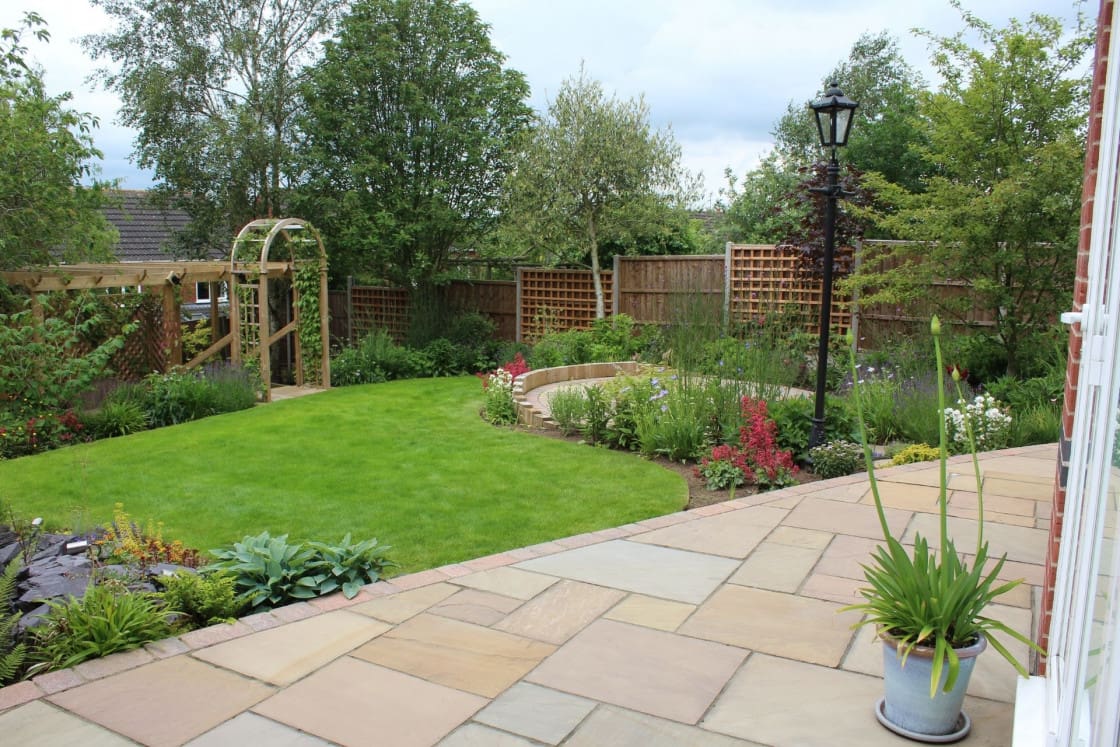Chelsea Flower Show 2019 – The Trends You Can Achieve in Your Own Garden


With the cooler, darker and wetter weather looming now the clocks have gone back, it’s a time for many of us to enjoy the warmth of our cosy homes – unless you have a firepit to warm you up of course! This may not be the best time to be thinking about planting in our gardens, but it is a fantastic time to plan or lay your patio spaces in your garden. Landscaping your garden is a great way of maximising the use and enjoyment you can get from your outdoor space, but the work required to create it can often mean your garden is out of action while that’s in progress.
You don’t want that to land smack bang in the middle of one of the UK’s unpredictable sunny spells – you want to be garden ready, with the only decision being Pimms or Prosecco! We shared some patio ideas with you on our webinar last week, but here are the three S’s to think about first if you’re considering adding a patio to your garden…
This is one of the key factors in how you can use your garden space. Jodie, one of our designers, will always say to look at the ‘journey’ your garden design takes you through and there was quite a debate on whether curves or straight edges were best.
The shape and structure of your garden will often dictate which patio style would best suit the available ground you can work with. Curves can make your journey more of a meandering – it’s a softer way of sectioning the garden, and allows a bit more freedom for everything to not be perfectly straight – they are the perfect way of visually breaking up the straight aspect of a long thin garden for instance.
When many of us think of a straight-edged patio, it’s easy to think of a few flagstones plonked together and a central flagstone path running through the middle of a garden, but with some creativity and flair, it’s so much more than that as you can see from some of the image in the gallery. The straighter edges can create a much more striking aesthetic which works really well with more modern or contemporary garden designs.
This may seem a small factor, but people often have a natural preference towards symmetry which they don’t always notice immediately. Many gardens, particularly traditional ones, have a more asymmetric design where more features are created on one side of the garden than the other.
The symmetry of your garden design will be impacted by components of the garden which are already in place such as established trees or existing walls or structures. When designing the overall aesthetic and functionality of your garden, you’ll need to look at these to decide whether they are being kept as part of the new design. You’ll then be able to choose how you’ll want the symmetry and structure of the garden’s design to look around them and where your patio areas can be located.
There’s no point building a fantastic patio that you love and can’t wait to use, only to realise that the only time you would use it is late afternoons when the sun is in another section of the garden altogether.
Take a good look at where the sun is throughout the day, and the times you tend to use your garden. If you work during the daytime for instance, you’ll probably want to make the most of any sunny weekday evenings, so paying attention to this before you choose the location of your main patio area is vital. Many garden designs we create incorporate multiple patio areas or decking, to provide additional social areas as well as to draw attention to the various parts of the garden design.
Those are just a few patio practicalities to think about to get you started. If you want to watch the video for more patio inspiration, you can find it here, or feel free to give our friendly team a call on 0116 210 0760, and we’ll happily talk you through the aspects of planning a garden in more detail.